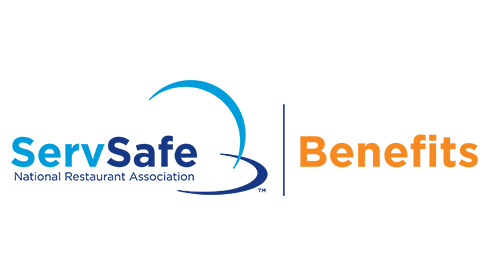The Ultimate Guide to Becoming a Certified ServSafe Food Handler in Your State
The Ultimate Guide to Becoming a Certified ServSafe Food Handler in Your State
Blog Article
Comprehensive Food Handlers Educating for Health and Safety And Security
In today's quickly developing food solution landscape, detailed food trainers training has actually become a critical part for ensuring health and safety and security. By instilling vital methods associated with hand health, food storage, and cleanliness, this training not just reduces the risk of foodborne diseases however additionally enhances conformity with regulative requirements. The effects of such training expand past simple compliance; they touch upon public health and wellness and customer trust. The effectiveness of these training programs can differ substantially. What elements absolutely identify their success in promoting a culture of security?
Value of Food Security Training

In addition, food safety and security training helps to make certain that staff members understand current guidelines and guidelines, which are important for keeping operational licenses and preventing expensive charges. Normal training sessions likewise work as a system for strengthening ideal techniques, therefore lowering the probability of human mistake, which frequently functions as a leading root cause of food contamination.
Additionally, buying food safety and security training can enhance a facility's track record, as customers increasingly focus on eating experiences that mirror high safety and security standards. Such proactive steps not only secure consumers yet additionally contribute to the long-term success of food organizations. In recap, comprehensive food safety and security training is a vital aspect of food solution procedures, straight affecting both public wellness and company sustainability.
Secret Concepts of Health
Maintaining high standards of hygiene is vital in any type of food dealing with atmosphere to avoid contamination and make certain the safety and security of customers. The vital concepts of health encompass numerous important practices that food trainers should continually apply.
First, hand health is vital; food trainers should wash their hands completely with soap and water prior to and after taking care of food, as well as after making use of the toilet or touching any kind of possibly polluted surface areas. Secondly, tools and surface areas have to be frequently cleaned up and disinfected to eliminate microorganisms. This includes tools, reducing boards, and kitchen counters, which need to be preserved in a clean condition.


Proper food storage is also crucial; raw foods ought to be saved independently from cooked or ready-to-eat things to stay clear of cross-contamination. servsafe certifications. Additionally, preserving appropriate temperature level controls is critical; perishable products ought to be kept at safe temperatures to inhibit microbial growth
Last but not least, individual health can not be forgotten. Food handlers need to put on clean apparel, use hair restraints, and prevent functioning when ill. By adhering to these key principles of health, food trainers can considerably lower the danger of foodborne health problems and advertise a much safer eating experience for all customers.
Common Foodborne Ailments
Although many foodborne illnesses can be stopped through appropriate hygiene and risk-free food handling practices, they continue to be a significant public health problem. Foodborne pathogens can result in a range of health problems, ranging from moderate gastrointestinal distress to extreme problems and even fatality.
Typical foodborne ailments include salmonellosis, brought on by Salmonella bacteria, frequently connected to undercooked chicken and eggs. One more prevalent disease is listeriosis, connected with raw dairy items and ready-to-eat meats, which can be specifically harmful for expecting ladies and immunocompromised people. Norovirus, frequently acquired from contaminated food or surfaces, is known for its rapid spread and ability to create episodes in communal settings.
Escherichia coli (E. coli) infection, especially linked with undercooked ground beef and polluted fruit and vegetables, can cause severe abdominal cramps and kidney failure in many cases. Furthermore, Clostridium perfringens, typically found in huge amounts of food that are incorrectly stored, can cause food poisoning with signs appearing quickly after usage.
Recognizing these ailments is essential for food handlers, as understanding can considerably minimize the risk of contamination and safeguard public health. Correct education and learning and training are crucial parts in combating foodborne diseases.
Best Practices for Food Handling
Reliable food taking care of methods are vital in preventing the spread of foodborne ailments. Correct hand health is vital; food trainers need to clean their hands completely with soap and water prior to and after taking care of food, particularly raw meat or chicken. This straightforward action considerably decreases the threat of cross-contamination
Secondly, preserving proper food storage temperature levels is critical. Disposable products need to be saved at or listed below 40 ° F(4 ° C) to inhibit bacterial development. In addition, cooked foods should be maintained above 140 ° F(60 ° C) till offered.
Thirdly, making sure tidiness of surfaces and devices is essential. Routinely sanitize countertops, cutting boards, and utensils, especially after preparing raw foods. Usage separate cutting boards for raw and ready-to-eat foods to further reduce contamination dangers.
In addition, when preparing food, it is essential to adhere to the concept of "first in, first out" (FIFO) to handle inventory click now efficiently and minimize perishing. Constantly adhere and read to food product labels for safe cooking temperatures and managing instructions. By implementing these finest techniques, food trainers can significantly boost food safety and security and safeguard public health.
Applying a Safety And Security Society
Producing a safety and security society within a food handling environment is essential for cultivating a commitment to food safety amongst all employee. This culture highlights the importance of food safety as a shared duty, encouraging workers to focus on hygiene practices continually.
To implement a safety and security culture, organizations must begin by giving detailed training that deals with food handling methods, possible hazards, and the relevance of individual hygiene. Educating sessions must be interactive and tailored to the certain duties of team member, guaranteeing significance and involvement.
Furthermore, management plays a crucial function explanation in developing this culture. Management must design secure techniques and interact the value of food safety and security on a regular basis. Acknowledging and awarding staff members that maintain safety requirements can even more enhance these actions.
In addition, open communication networks need to be developed, permitting staff to report safety and security problems without anxiety of effect. Routine safety and security audits and comments sessions can help determine areas for renovation and strengthen accountability.
Inevitably, growing a security culture not only boosts compliance with food safety regulations but additionally secures public wellness, promotes worker spirits, and adds to the overall success of the food managing establishment.
Final Thought
In final thought, extensive food handlers training plays a pivotal function in promoting hygiene and safety and security within food solution establishments. By outfitting workers with vital expertise regarding food safety principles, typical foodborne health problems, and finest practices for taking care of food, such training substantially lowers health risks. Promoting a culture of security enhances the facility's online reputation and aligns with consumer expectations for high safety and security standards, inevitably adding to public wellness defense and the general success of the food solution market.
In today's swiftly advancing food service landscape, detailed food handlers training has actually emerged as an important part for making certain health and security.Food safety training is important for keeping high criteria in food handling and prep work, with research studies indicating that correct training can decrease foodborne health problems by up to 30%. In recap, comprehensive food safety training is an indispensable aspect of food solution operations, directly impacting both public wellness and company sustainability.

Report this page